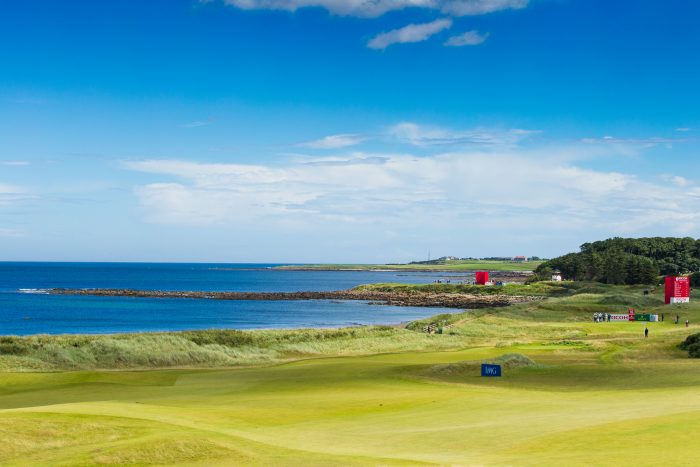The effect of climate change on Scottish golf courses to be investigated
The R&A is to invest thousands of pounds into examining the effects of climate change on golf – in particular on links courses in Scotland.
The announcement comes as scientists estimate almost £400 million worth of damage could be caused by coastal erosion around Scotland.
The Old Course at St Andrews is among several of the world’s most prestigious courses to be looked at in the three-year project.
The study will be led by Professor Bill Austin, from the University of St Andrews.
The move is part of an action plan by The R&A to look at challenges facing the sport’s sustainability. Reports suggest the governing body will invest anywhere between £90,000 and £650,000 on this.
Austin said: “The oceans and seas that surround many of the world’s top golf courses play a vital role in their future viability.

The Old Course, St Andrews. © Tristan Jones
“Many are already seeing the impact of coastal erosion and flooding brought on by more storms and rising sea levels as a result of climate change.
“This research will allow us to consider all climate-related factors that will have an ever-lasting effect on the home of golf.”
The Coastal Change Action Plan is a key component of The R&A’s Golf Course 2030.
It was established in 2018 as an industry initiative to consider the impact of the changing climate, resource constraints and regulation on golf course condition and playability.
Researchers estimate almost £400m worth of property and infrastructure around Scotland’s coastline is at risk due to erosion.
The study will also look at opportunities for blue carbon – where the element is captured by coastal ocean eco-systems – and the role of long-term storage in Scotland’s shoreline habitats surrounding golf courses.
Scientists believe protecting these environments could reduce greenhouse gases that would otherwise contribute to global warming.

© Tristan Jones
Steve Isaac, director of sustainability at the R&A, said: “We are funding these projects to develop best practice in sustainability and provide solutions to golf course managers that will help to sustain and improve the standard of golf course conditions and playability for the benefit of those who enjoy the sport.”
The Climate Coalition’s 2018 report claimed Open Championship venues such as St Andrews and Royal Troon could be under water by the end of the century if sea levels rose even slightly as a result of climate change.















The first thing to note is that the Climate Coalition, who wrote the report, is not some objective, scientific organisation, but a grouping of activist outfits, such as WWF, Christian Aid, Oxfam, 350.org, and a a whole host of other usual suspects, all of who have their drums to bang. In other words, not the sort of organisation you could trust to produce an unbiased report.
1) The report says six of the UK’s seven wettest years on record have occurred since 2000, with cricket’s County Championship already losing thousands of overs every season.
In fact the long running England & Wales rainfall series shows nothing unusual at all about recent rainfall trends.
2) Open Championship venues such as St Andrews and Royal Troon could be under water by the end of the century if sea levels rise even slightly as a result of climate change
Sea levels around the Scottish coast have barely risen at all since the 19thC. The long running tidal gauge at Aberdeen, for instance, shows a rise of only 0.72mm a year since 1862, with no acceleration.
3) It adds that “more than 450 years of golfing history” at Montrose, one of the five oldest courses in the world, is at risk of being washed away by rising seas and coastal erosion linked to climate change…
Research published by Dundee University in 2016 showed the North Sea has crept 70 metres towards Montrose within the past 30 years. As we have already seen, sea levels at Aberdeen, 40 miles up the coast from Montrose, have barely risen at all in the last century. The problem of erosion at Montrose, which effectively is built on a sandbar, is a much more complex one then the Climate Coalition con-merchants would like you to believe, as the Scotsman reported in 2015…
A scientific study by Milne, Dong and Davidson in 2012 confirmed that the two major factors behind the erosion:
a) A shift of the direction of the tides to a more northerly direction, thus impacting the golf course.
b) Dredging of the estuary. The dredging really took off when the North Sea oil boom started.
We see an all to depressingly familiar pattern with this report. Activist researchers publish a junk report, warning us of climate apocalypse. The BBC and the rest of the media broadcast it without any questions asked, as if it were fact. And virtue signalling organisations tell us we must all wake up to the challenge.
Shame on the R&A in falling for this nonsense